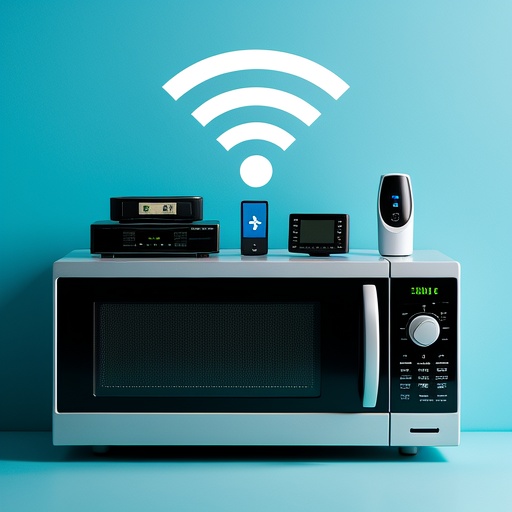Why does Wi-Fi signal get weaker in some rooms of a building?
 The weakening of Wi - Fi signals in certain rooms of a building can be attributed to several factors. Firstly, physical obstacles play a significant role. Buildings are often constructed with various materials such as concrete, brick, and metal. Concrete and brick walls can absorb and reflect Wi - Fi signals, reducing their strength as they pass through. For example, a thick concrete wall in a high - rise building can act as a barrier, blocking a large portion of the Wi - Fi waves. Metal objects are even more problematic. Metal can completely block Wi - Fi signals due to its high conductivity. Refrigerators, metal filing cabinets, or even large metal beams in the building's structure can create dead zones where the Wi - Fi signal is extremely weak or non - existent.
The weakening of Wi - Fi signals in certain rooms of a building can be attributed to several factors. Firstly, physical obstacles play a significant role. Buildings are often constructed with various materials such as concrete, brick, and metal. Concrete and brick walls can absorb and reflect Wi - Fi signals, reducing their strength as they pass through. For example, a thick concrete wall in a high - rise building can act as a barrier, blocking a large portion of the Wi - Fi waves. Metal objects are even more problematic. Metal can completely block Wi - Fi signals due to its high conductivity. Refrigerators, metal filing cabinets, or even large metal beams in the building's structure can create dead zones where the Wi - Fi signal is extremely weak or non - existent.
 Secondly, distance from the router is a crucial factor. Wi - Fi signals follow the inverse - square law, which means that the signal strength decreases exponentially as the distance from the source (the router) increases. In a large building, rooms that are far away from the router will naturally receive a weaker signal. For instance, if the router is placed in the living room on the first floor, a bedroom on the second floor at the far end of the house will have a much weaker signal because the Wi - Fi waves have to travel a greater distance and may also encounter multiple walls and floors along the way.
Secondly, distance from the router is a crucial factor. Wi - Fi signals follow the inverse - square law, which means that the signal strength decreases exponentially as the distance from the source (the router) increases. In a large building, rooms that are far away from the router will naturally receive a weaker signal. For instance, if the router is placed in the living room on the first floor, a bedroom on the second floor at the far end of the house will have a much weaker signal because the Wi - Fi waves have to travel a greater distance and may also encounter multiple walls and floors along the way.
 Another factor is interference from other electronic devices. In modern buildings, there are numerous electronic devices that operate on similar frequencies as Wi - Fi. Microwave ovens, for example, emit radiation in the 2.4 GHz band, which is the same band used by many Wi - Fi routers. When a microwave is in use, it can cause significant interference with the Wi - Fi signal, leading to a weaker connection in the surrounding area. Bluetooth devices, cordless phones, and even some baby monitors can also interfere with Wi - Fi signals, especially if they are in close proximity to the router or the device trying to connect to the Wi - Fi.
Another factor is interference from other electronic devices. In modern buildings, there are numerous electronic devices that operate on similar frequencies as Wi - Fi. Microwave ovens, for example, emit radiation in the 2.4 GHz band, which is the same band used by many Wi - Fi routers. When a microwave is in use, it can cause significant interference with the Wi - Fi signal, leading to a weaker connection in the surrounding area. Bluetooth devices, cordless phones, and even some baby monitors can also interfere with Wi - Fi signals, especially if they are in close proximity to the router or the device trying to connect to the Wi - Fi.
 In conclusion, the weakening of Wi - Fi signals in some rooms of a building is a result of a combination of physical obstacles, distance from the router, and interference from other electronic devices. To improve the Wi - Fi signal in these areas, one can consider repositioning the router, using Wi - Fi extenders or mesh networks, and minimizing the use of interfering devices.
In conclusion, the weakening of Wi - Fi signals in some rooms of a building is a result of a combination of physical obstacles, distance from the router, and interference from other electronic devices. To improve the Wi - Fi signal in these areas, one can consider repositioning the router, using Wi - Fi extenders or mesh networks, and minimizing the use of interfering devices.










